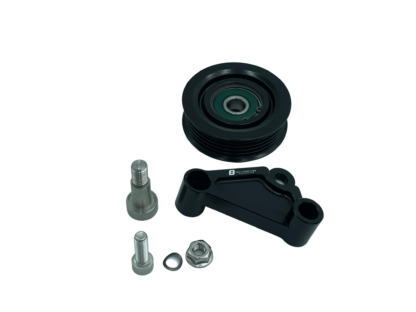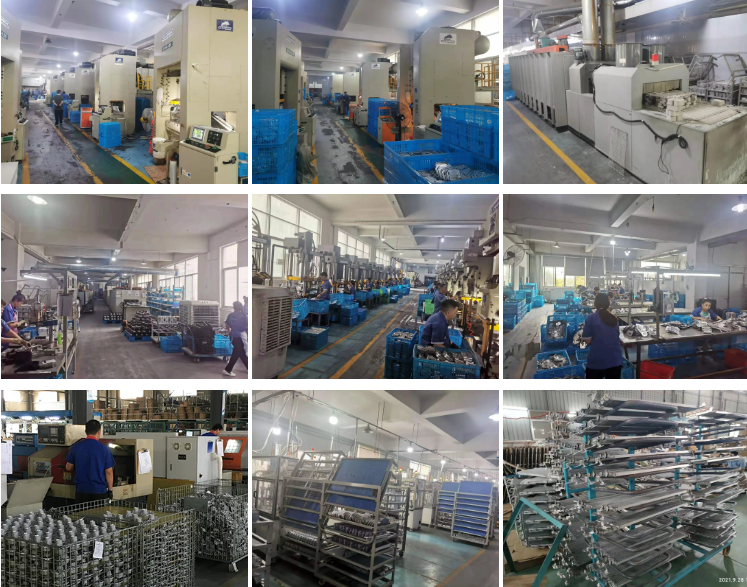What does a idler pulley do?
-
Support and guide the belt
The idler pulley helps to support and guide the belt along the pulley system, ensuring proper alignment and tension.
-
Reduce vibrations
By providing a smooth surface for the belt to run along, the idler pulley helps reduce vibrations and noise in the system.
-
Extend belt life
Properly functioning idler pulleys can help extend the life of the belt by reducing wear and tear.
-
Adjust belt tension
Idler pulleys can be used to adjust the tension of the belt, ensuring optimal performance of the system.
-
Prevent slippage
By maintaining proper tension and alignment, idler pulleys help prevent belt slippage during operation.
What happens when an idler pulley goes bad?
-
Noisy operation
A bad idler pulley can cause increased noise in the system due to improper alignment or wear.
-
Decreased belt life
When an idler pulley is faulty, it can lead to increased wear on the belt, reducing its lifespan.
-
Loss of tension
If the idler pulley fails, it can result in a loss of tension in the belt, affecting system performance.
-
Overheating
A malfunctioning idler pulley can cause the belt to overheat due to excessive friction, potentially leading to system failure.
-
Complete belt failure
In severe cases, a bad idler pulley can cause the belt to break or come off completely, resulting in total system failure.
Does idler pulley need to be replaced?
-
Regular inspection
Regularly inspect the idler pulley for signs of wear or damage.
-
Unusual noises
If you hear unusual noises coming from the pulley system, it may be time to replace the idler pulley.
-
Visible damage
If there are visible signs of damage such as cracks or wear, it is recommended to replace the idler pulley.
-
Loss of tension
If the belt tension is not properly maintained, consider replacing the idler pulley to ensure optimal performance.
-
Frequent belt replacements
If you find yourself replacing the belt frequently, it may be a sign that the idler pulley needs to be replaced.
Advantages of idler pulley
-
Improved belt performance
Idler pulleys help improve belt performance by maintaining proper tension and alignment.
-
Noise reduction
Properly functioning idler pulleys can help reduce noise and vibrations in the system.
-
Extended belt life
By reducing wear and tear on the belt, idler pulleys can help extend its lifespan.
-
Easy maintenance
Idler pulleys are relatively easy to maintain and replace, making them a convenient component in the system.
-
Cost-effective solution
Replacing a faulty idler pulley is a cost-effective way to ensure the smooth operation of the pulley system.
Process of Compound Pulley
-
Mold
The mold is created to form the shape of the pulley.
-
Casting
The molten raw materials are poured into the mold to form the pulley.
-
Raw materials
High-quality raw materials are used to ensure the durability of the pulley.
-
Production
The pulley is produced using precision machinery and techniques.
-
Testing
The finished pulley goes through rigorous testing to ensure quality and performance.
-
Antirust treatment
Special treatment is applied to prevent rust and corrosion on the pulley.
-
Seperate inspection
Each pulley undergoes individual inspection to guarantee quality before shipment.
-
Marking
Each pulley is marked with identification for traceability and quality control purposes.
What is the function of the tensioner and idler pulley?
-
Provide belt tension
Both the tensioner and idler pulley work together to maintain proper tension in the belt.
-
Guide the belt
These pulleys help guide the belt along the pulley system, ensuring smooth operation.
-
Reduce vibrations
By providing a smooth surface for the belt to run along, they help reduce vibrations and noise.
-
Extend belt life
The tensioner and idler pulley can help extend the life of the belt by reducing wear.
-
Adjust belt alignment
They assist in adjusting the alignment of the belt for optimal performance.
-
Prevent slippage
By maintaining proper tension and alignment, they help prevent belt slippage during operation.
-
Ensure system efficiency
Overall, the tensioner and idler pulley work together to ensure the efficiency and reliability of the pulley system.
How to stop a idler pulley from squeaking
-
Clean the pulley
Regularly clean the idler pulley to remove any dirt or debris that may be causing the squeaking.
-
Lubricate the pulley
Apply a small amount of lubricant to the pulley to reduce friction and eliminate the squeaking noise.
-
Check alignment
Ensure that the idler pulley is properly aligned with the belt to prevent unnecessary friction and noise.
-
Inspect for damage
Check for any signs of wear or damage on the pulley that may be causing the squeaking.
-
Replace if necessary
If the squeaking persists despite cleaning and lubrication, consider replacing the idler pulley.
About HZPT
HZPT, established in 2006, is a leading manufacturer of precision transmission components based in Hangzhou. We specialize in producing various mechanical parts and can customize products according to your needs. Before establishing our overseas sales team, we started producing 3D printer parts, security screws and nuts, camera mounts, and more. We also offer assembly and production services to save time and costs. Our dedication to quality, competitive pricing, and excellent service has earned us a reputation among major clients in Europe and America. Choose HZPT for the best products and services!


